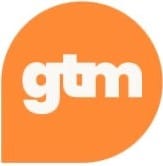Everyone can relate to the challenges of a new product launch. At some point in your career, you may even come across the launch of a new technology, a technology that is on the cutting edge and the market is not aware of yet.
Enterprise GTM for AI automation
The three main lessons I’ve learned from the AI automation journey are:
- Riding a hype wave is not enough to succeed.
- If you want to launch an innovative product, you need to build trust with your market.
- When you’re building this trust, you need to work with the entire ecosystem of market players, not just your customers.
When I’m asked to describe what's been happening in the AI industry, three words come to mind: hype, confusion and fear. So how did it all begin?
AI is older than you realize. It’s been developed and tried and failed for decades. Eventually, several things came together to make it work. First of all, higher computational power emerged that was big enough to support massive amounts of data. The second part was algorithms such as machine learning and deep learning, which were developed around the same time in the late 2000s and early 2010s.
Around the time I joined the space in 2015, AI as a technology was at the summit of the hype wave. Companies were making money like crazy. The estimated revenue for AI was $10 billion, and the estimated growth was 300% by 2020. So going into this particular industry, I thought the technology was a product marketer’s dream. In fact, I was very naive; hype was not enough.

Fear of the unknown
Nobody really knows what AI is, but everybody claims they have it. We had every business calling our company and asking: what is this magical AI stuff? What does it do? What are the use cases? And how can I apply this to my technology? Is it machine learning? Is it deep learning? There were so many buzzwords around it.
The notion of evil robots soon became a major fear factor around the use of AI. Since the release of Blade Runner and the Terminator, we’ve had this fear that robots will rise up against us.
When talking to prospects and partners, some of the executives asked me: how do you make sure that the runaway robots scenario doesn't happen? That your AI doesn't take over our company?
This was a big fear factor to overcome, especially when launching something new. But when it's a new technology that also threatens humankind, how do you build trust with the market?
Simply riding the hype wave is not enough for a successful GTM
One quote that I think a lot is from Seth Godin, who said:
“People do not buy goods and services. They buy relations, stories, and magic.”
When you think about this, the magic part has already been covered by the whole notion of AI being a mysterious technology. But what do you do with relations and stories? This is where product marketing comes in to help craft the message, help the sales team, and drive the message and position to the broader audience.
When adopting new technology, it’s fundamental to look at the adoption curve to help you drive your message and identify how to speak, who to speak to, and when. Geoffrey Moore's take on the adoption curve includes a chasm. You have a point beyond which is hard to move, and if you don't move beyond it, you'll come to a dead end.
It's very important for product marketers to think about not just how to drive the position in the messaging for early adopters, but also to think about driving the product into the mainstream market.
You also want to consider the entire ecosystem of players. Of course, there are your buyers, but there are also partners, influencers, competitors, and adjacent technologies.
All of these are a part of your network, and can be your allies. You can find synergies with the right circumstances because you all have common goals, you just need to find them.
For example, your influencers want to stay on top of the cutting edge of technology. They’re advisors and industry analysts who’re incentivized to stay as the thought leaders in the industry, and will be your biggest advocates when launching new technology.
But buyers and partners will also be interested in advocating for your technology because they want to be perceived as the influencers in the space.
These are your tech enthusiasts and your visionaries. They want to be perceived as leaders in their organizations, and therefore want to champion your product.
Another example is your competitors. First, you might think you need to find your differentiation and individual slice of the pie. However, when it's a high-growth market, it's in everybody’s common interest to grow the pie so that everyone can get the largest slice possible.
In response to the fear that AI would take over human jobs, we as vendors started coming out with positioning and messaging that stressed that it wasn’t going to, but that it would automate manual tasks and free up resources for more meaningful jobs. And over the course of several months, it soon became the industry standard to talk about freeing up resources, as opposed to automating jobs.
Adjacent technologies are also very important, in terms of a broader AI category. The more you attract VC funding and buzz, the more the market will trust you. Therefore, the entire category benefits from this joint marketing promotion.
Build trust with buyers by building trust with their advisors
Statistics from Forrester show that almost 70% of your buyers rely on their own due diligence as opposed to getting information from your website. And 60% of buyers don't even want to talk to the sales team.
They want to do their own research, and there’s no better way to conduct due diligence than through influencers. This is especially true for highly innovative products.
Forrester’s B2B go-to-customer strategy matrix has four buying archetypes depending on the complexity of the decision process, and the complexity of the solution. AI automation as a product would fall under transformation, high complexity, and high decision in moments of the decision making. And this is where you want to attract thought leadership support.
Oftentimes, buyers don’t know what options are available. They also know that there is a lot of risk associated with taking the next step and trusting in this new technology. Therefore, you need to convince them through the people that they trust—the influencers.
The ‘chicken and egg’ of customer success stories
When you have a new technology and you’re launching it into the market, what comes first? Your customers, or your customer success stories? This is very tricky, because the other source of trust building comes from the peers for your vendors. So here’s how I approach this.
First, to build some of your core use cases, you can take the product to the market and position it to the early adopters who’re willing to take the risk and try it out early without any proof. Then, as you go into the mainstream, your level of credibility will increase the credibility level of the marketing materials you provide.
So once you have the early adopters starting off, they may have a proof of concept or a pilot project. This project can serve as your early customer story. And then once you have the first implementation, you have your first case study with real results.
Key takeaways
The hype does not necessarily guarantee success. Thorough planning and hard work are needed, because unforeseeable obstacles will likely come up that you need to be able to overcome.
Go-to-Market for innovative products is built on the relationship with the market. It’s important to start a relationship with the early adopters and the visionaries, but you must always think about the next step and how you will take the product to the next group of customers that are mainstream adopters.
Finally, to build your relationship and trust with the market, work with the entire ecosystem. Each player is as valuable to you as you are to them. So work together, find the synergies, and jointly grow the market.
How to improve your Go-to-Market knowledge
Delivered by Yoni Solomon, Chief Marketing Officer at Uptime.com, Go-to-Market Certified includes everything you need to design, launch, and measure an impactful go-to-market strategy.
By the end of the course, you'll be able to confidently:
🚀 Grasp a proven product launch formula that’s equal parts comprehensive, repeatable, creative, and collaborative.
🧠 Gain the expertise and know-how to build and tailor an ideal product blueprint of your own.
🛠 Equip yourself with templates to facilitate a seamless GTM process.





